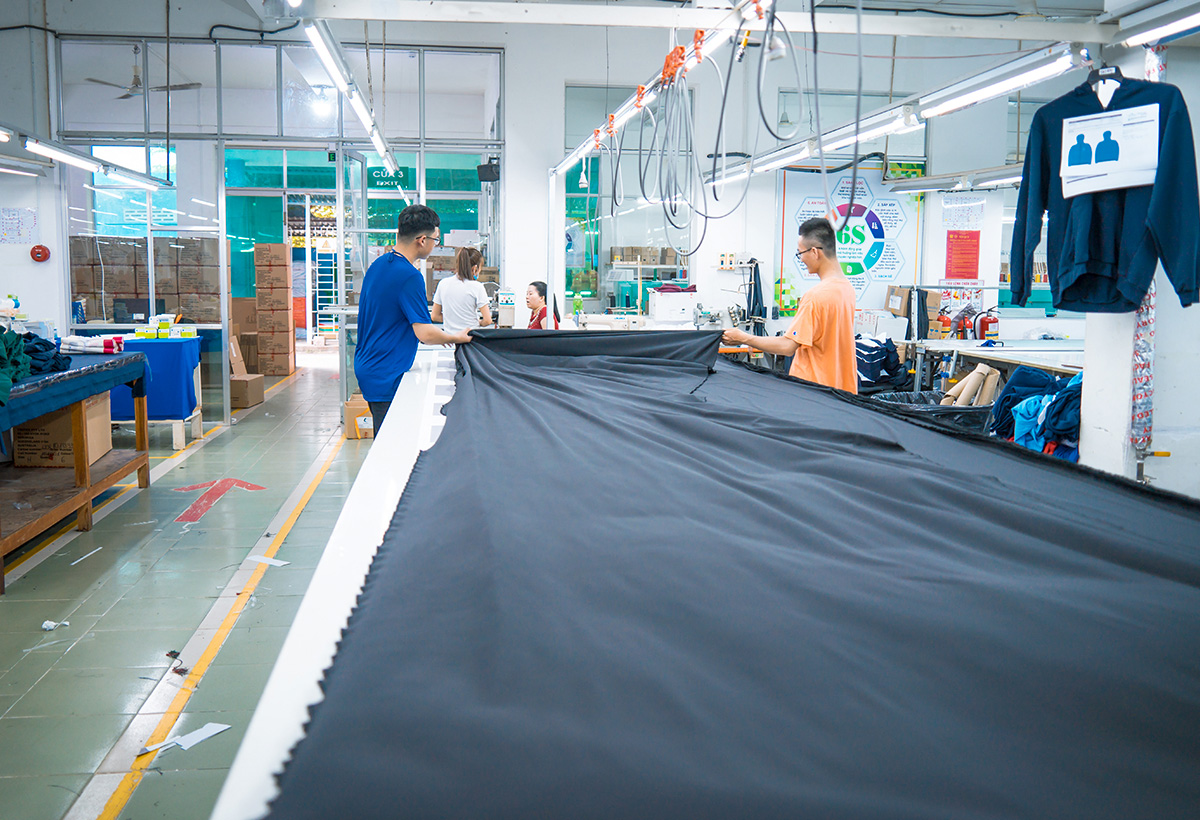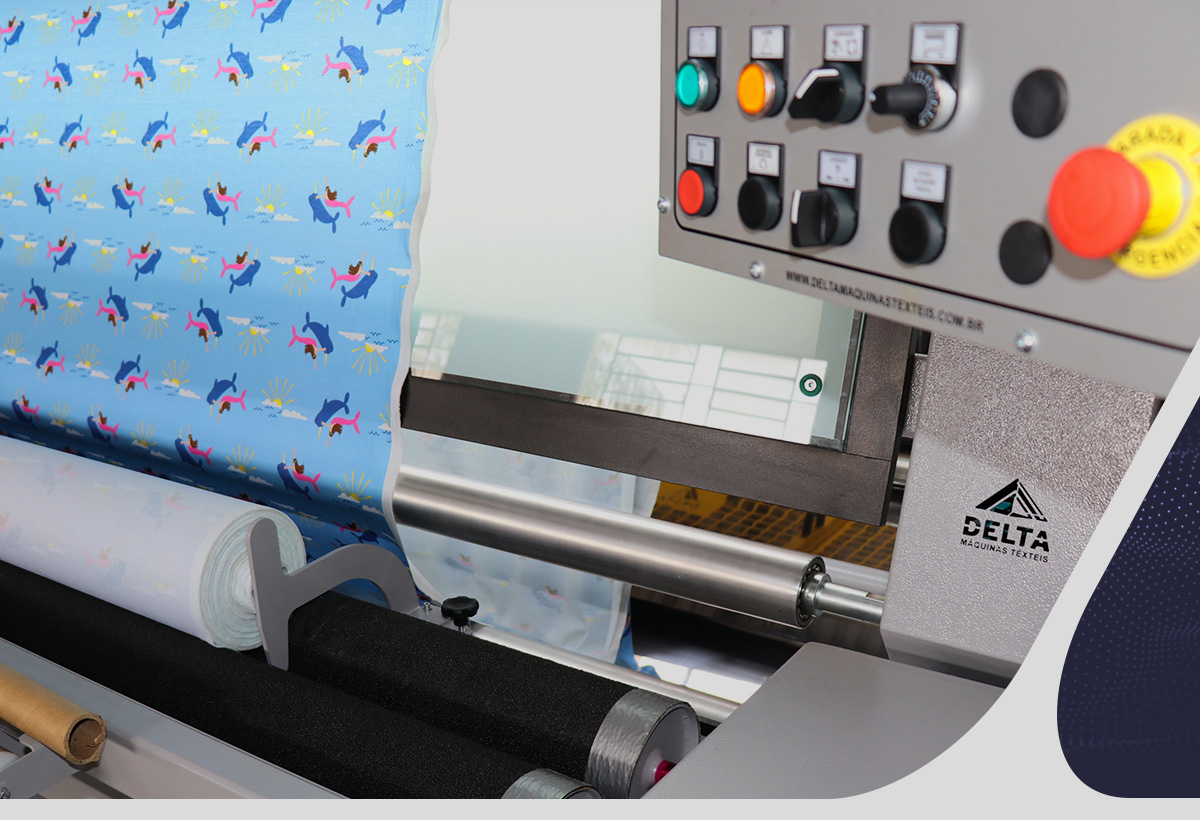As it is broad and extremely complete, it is normal for certain doubts to arise about the textile production chain. Mainly regarding the functioning and the links present in this network.
With this in mind, we have gathered in this text the main information about the textile chain. Furthermore, we highlight some challenges and opportunities faced by the company and tips on how to ensure growth in this scenario.
Continue reading to check it out!
What is the textile production chain and how does it work?
The textile production chain is nothing more than the representative term for the connection of all links in the sector’s production.
In other words, it starts with the production of fibers, through cotton plantations and goes all the way to fashion shows. Thus, passing through spinning mills, weaving mills, processing plants, clothing manufacturers and retail.
According to Abit, Brazil is the largest complete Textile Chain in the West! That is, it has all these points in full development in the domestic market. Without, at first, the need to import. Thus, the country is self-sufficient in production from raw materials to the final product.
Therefore, the textile production chain is responsible for turning fibers into threads, threads into fabrics and fabrics into final products.. So, here you can find:
- Raw material producers;
- Chemical industry;
- Textile industries and operators;
- Manufacturers of textile equipment and machines;
- Suppliers of inputs (dyes, pigments, etc.);
- Business;
- Final costumer.
The main links in the textile production chain are:
1. Raw material
This is the first part of the textile production chain! It is responsible for producing the raw material, which can be acquired in basically two ways:
- Extrusion of threads or fibers;
- Agricultural or animal fiber production.
In the first case, it refers to the development of artificial and synthetic fibers, through the chemical industry.
As an article points out on the subject, they emerged to meet the needs for greater speed and lower production costs. Thus, reducing dependence on natural fibers in case of crises or shortages.
In fact, the mixture between manufactured and natural fibers is responsible for adding greater resistance, durability, as well as ease of treatment and presentation.
However, in Brazil, there is still a greater use of natural fibers, estimated at 65% compared to 35% of manufactured fibers.
Therefore, agricultural or animal fiber production is the best known and most traditional in the sector. It refers to the acquisition of fibers vegetable or animal way. With cotton being the main raw material for textile industry.
2. Wiring
Spinning is the process used to transform fiber into yarn. To achieve this, the following processes occur:
- Cleaning and opening the raw material;
- Alignment of the fibers to form a blanket;
- Blanket is tuned and turned into ribbon;
- Ribbon is placed on the treadmill, stretched, twisted and turned into thread.
However, according to the article already mentioned, it is necessary to emphasize that the spinning stage, here in Brazil, generally occurs in an integrated manner. The objective is to optimize the process and guarantee the strategic and competitive performance of the industry.
For example, the most common is the spinning process being directly linked to weaving. However, it is still possible to perceive the integration between spinning-weaving-finishing.
3. Weaving
Despite the possibility of integrating the spinning link, weaving is limited to intertwining the yarns produced. They are placed in different directions, called warp (long) and weft (cross).
From this it is possible to manufacture, basically, two types of fabrics: flat and knitted. The difference between them is in the form of interlacing. For example, in the first, the construction is regular, using both directions of the thread.
The mesh is made up of threads that interconnect and guarantee vertical and lateral support. Always in the same direction, similar to the knitting process.
Read also: Weaving machines: relationship with quality control and optimization
4. Processing
Processing is already the link in the textile production chain responsible for improving and adding value to the fabric. This process changes the physical characteristics of the piece so that it can have special and specific uses.
However, to achieve this, some steps are carried out which are divided into:
- Primary: responsible for preparing the material for receiving paint and finishing final (pre-bleaching). Here, it is possible to include brushing, shaving, singeing, among others;
- Secondary: In fact, tissue staining occurs. That is, with reactive dyes, pigments and other techniques. It can be total (dyeing) or partial (printing). And the printing can still be digital, which is a trend that has grown in the sector;
- Tertiary: enhances the characteristics of the fabric. The goal is to improve shine and feel. For this, sprays, waterproofing, softening, flame retardant finishing and others are applied.
Sample tests are also carriedout here to understand the quality and dimensional stability of the fabric. Thus, avoiding shrinkage, errors and waste in the manufacturing stage.
Read also: Digital vs. conventional printing: learn about the main differences
5. Manufacturing
Clothing is the link in the textile production chain that transforms the finished yarn into final textile products.. From clothing and footwear, to towels, decoration, sheets, and more.
And, according to an article, it is possible that other types of products will be produced that will be sent to the next industry. That is, such as the preparation of cotton filters and components for car interiors and packaging, for example.
In any case, here the design, making of molds, fitting, cutting and sewing of the piece takes place.. All the activities necessary to transform that fabric into the final product.
Read also: Textile machines: find out the ideal model for your production
6. Distribution and trade
Finally, the final phase arrives: distribution and trade. It is intended for collecting the final textile product, storage and the processes responsible for taking the item to the final public or industry in question.
What are the main challenges and opportunities in the textile production chain?

As you can see, the final product of each of these links is the basis for the next phase.
The textile production chain is completely interconnected. Therefore, it is necessary to eliminate certain adversities in search of the complete development of the industry.
We can highlight that the main challenges and problems of the sector are:
- Control of production costs, balancing labor, raw materials, inputs and resources;
- Waste and loss of materials between one phase and another;
- Quality Control;
- Optimization and performance between activities;
- Constant monitoring of changes in consumption.
At the same time as opportunities involve sustainability, personalization, and customer experience. These are responses to current consumer behavior and trends. Even because:
- 87% of customers prefer brands that offer a good experience,
- 75% say that companies with sustainable practices are more likely to win them over as customers;
- 83% of people prefer to consume personalized items.
In any case, there is only one answer to overcoming challenges and seizing opportunities: technology!
Innovation is fundamental to meeting the needs of contemporary consumers. Furthermore, it contributes to the continuous growth of the industry, contributing to competitiveness.
Automation, through intelligent textile machines, promotes high performance, scalability, standardization and the possibility of management data oriented. And all of this generates:
- Cost reduction;
- Energy saving;
- Increased security;
- Environmental conservation;
- Reduction of errors and greater productivity;
- No more waste;
- Transparency in business, more assertive management and greater control of information;
- Increased personalization and unprecedented scale.
Regardless of the scenario, technology contributes to the efficiency of production processes in the textile chain. Modern equipment avoids rework and, consequently, costs and production losses.
In short, innovative machines directly impact profitability and performance of production. Therefore, they promote the continuous improvement of products and services.
Next step
The textile production chain is made up of interconnected links. The presence of errors in the spinning stage can cause negative impacts on processing, for example.
It is necessary to guarantee quality at all stages to eliminate the main challenges in the sector and thus guarantee the great opportunities in the current market. And, as we saw, the technology is the answer to this.
To understand more, click the button below and download our complete e-Book.



